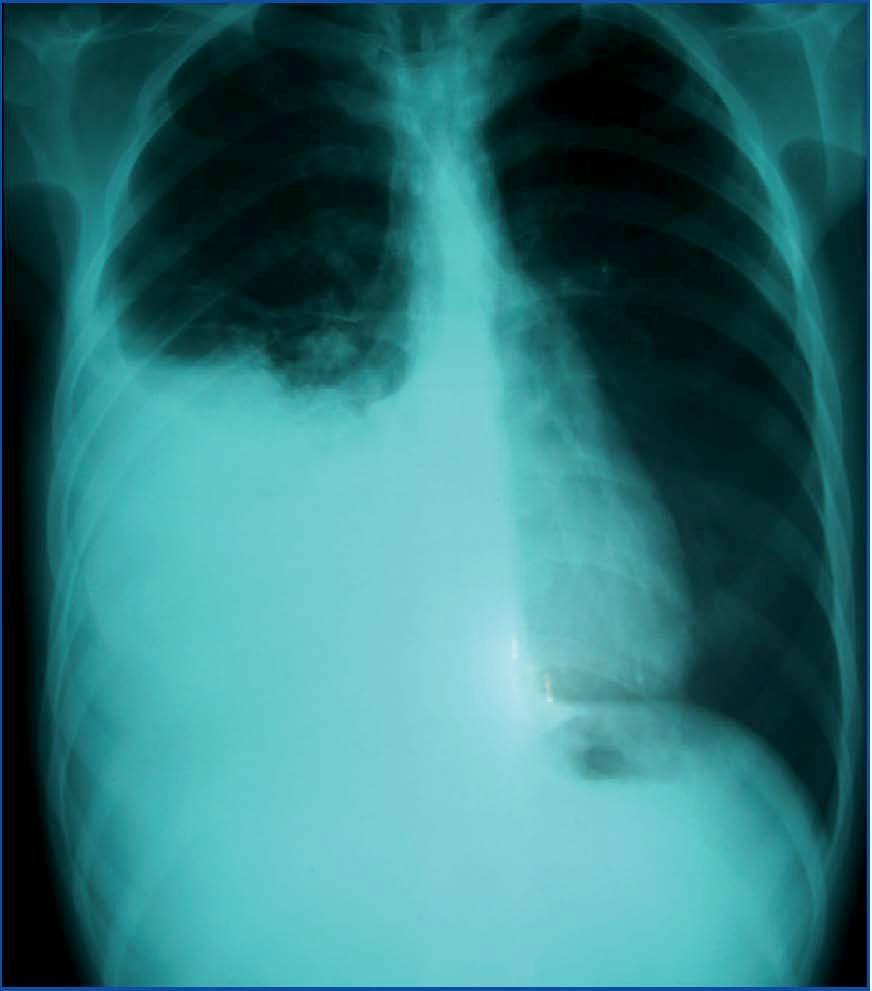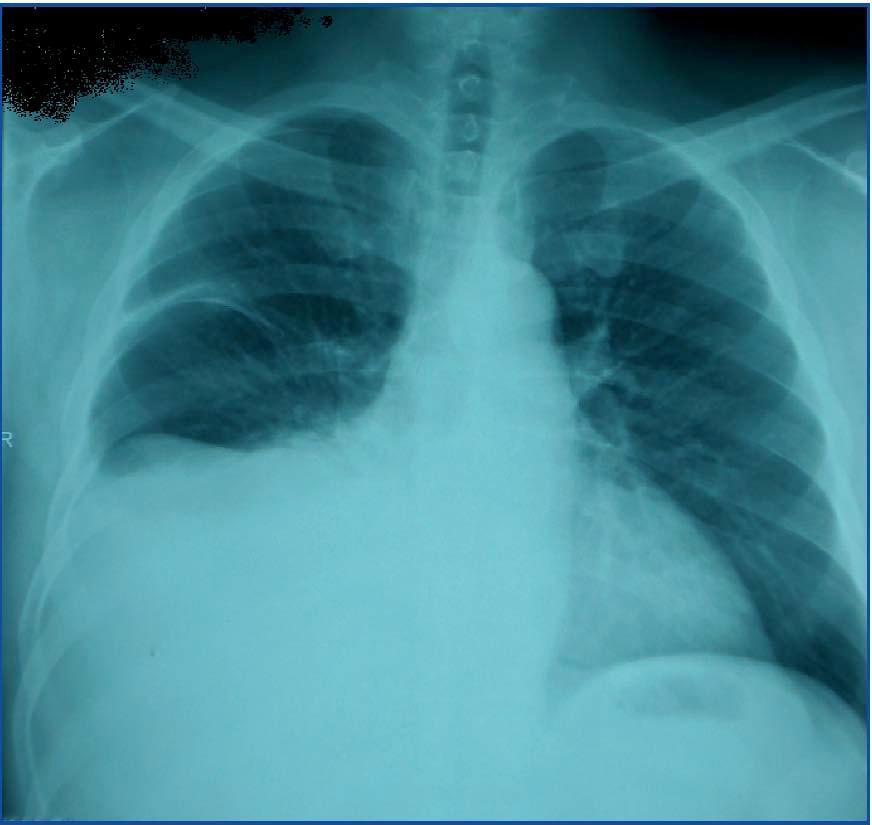To the Editor,
Hydrothorax is an uncommon complication in patients on peritoneal dialysis (PD), and is estimated at 1.6%-10%. It usually involves the abandonment of the treatment.
We present 2 cases of PD patients with this disease.
Case 1
A 47-year-old woman with a history of glycogen storage disease type V (McArdle’s disease), chiari malformation, chronic renal failure of unknown aetiology, retinal atrophy and hypertension.
A peritoneal catheter was implanted on 19/05/2000 in other hospital, and dialysis started with a 2-litre infusion 15 days later. From the start, the patient suffered abdominal discomfort, pleuritic pain in the right chest and dyspnoea. A chest x-ray identified hydrothorax (Figure 1), so PD was suspended and she was referred to our hospital.
In our centre, the pleural effusion was drained (transudate) and the chest x-ray performed was normal. PD was tried again with less infusion volume and the pleural effusion reappeared soon after. Subsequently, we tried an arteriovenous fistula (AVF) puncture, which was complicated by it leaking and by myositis.
The patient refused haemodialysis or any other treatment option to solve the pleuroperitoneal communication, so in September 2000 automated peritoneal dialysis (APD) was begun with low volume and head of bed elevated. This achieved good drainage, with the appearance of a small right pleural effusion on several occasions.
The patient remained on APD until August 2002, when she underwent a kidney transplant, requiring nephrectomy for thrombosis. In September 2002, she was again included in the PD programme, where she was held until she died at home in October 2003.
Case 2
This is the case of a 41-year old patient with a 20-year history of hypertension (HT) with difficult control and poor compliance. He was diagnosed in 2008 with chronic renal failure due to probable nephroangiosclerosis. A peritoneal catheter was implanted in December 2009, and continuous ambulatory PD started 15 days later without incident. A month later, he returned with a peritoneal catheter dysfunction, with significant drainage difficulty.
The physical examination revealed hypoventilation up to the middle portion of the right lung. The patient complained of dyspnoea, but had good oxygen saturation. There was evidence of a significant right pleural effusion on the chest x-ray (Figure 2).
Suspecting hydrothorax secondary to PD, a diagnostic thoracentesis was performed, which gave pleural fluid with the following data: WBC 200, Glucose 418, Protein <1, LDH 42.
Given that the patient refused haemodialysis (HD), after a few days of peritoneal rest, which achieved normalisation of the chest x-ray, ADP was attempted with low volume and head at 45º. The catheter did not work very well because there were major drainage difficulties and the hydrothorax reappeared. Finally, the patient agreed to HD, which is currently being performed without incident via left radiocephalic AVF.
The pleural effusion secondary to pleuroperitoneal communication in PD patients usually occurs at the start of dialysis, with 50% occurring in the first 30 days of therapy.1 Risk factors for its occurrence are being female, multiparity and polycystic kidney disease.2,3
The cause may be a birth defect, although there may also be acquired diaphragmatic defects that precipitate it. Sometimes, negative intrathoracic pressure combined with increased abdominal pressure caused by the infusion of peritoneal fluid may open small defects in the diaphragm and lead to the flow of fluid into the pleural space.4
The clinical manifestations depend on the magnitude and time of evolution. They include dyspnoea, cough, pleuritic pain or decreased ultrafiltration. However, some patients are completely asymptomatic, with the pleural effusion being detected in a routine physical examination.
The most common location is on the right side, as the left hemithorax is protected by the pericardium.
Chest x-ray and pleural fluid analysis are essential for diagnosis.
The treatment of this disease depends on the severity of symptoms and whether PD needs to be continued or not. If the patient is very symptomatic and the leak is substantial, a thoracentesis may be required to remove the liquid. However, in most cases drainage of the abdominal cavity is usually sufficient.
Sometimes, these pleuroperitoneal communications resolve themselves spontaneously, usually after a temporary transfer to haemodialysis, but they usually do not. The percentage of healing with conservative measures is usually 40%.
Chemical pleurodesis may be an alternative for patients who wish to continue with PD and are unresponsive to conservative measures.5
If surgery is intended to correct the diaphragmatic defect, some authors recommend previous thoracoscopy to verify that the defect is visible and then reparable.6 Although there are several treatment options, most patients with this condition require transfer to haemodialysis.2
Figure 1. Hydrothorax. Case 1
Figure 2. Hydrothorax. Case 2









